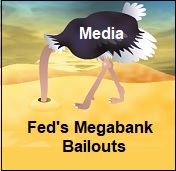-
Recent Posts
- Trump’s “Big Beautiful Bill” Is a Grotesque Giveaway to Fossil Fuel Billionaires While Adding $3.3 Trillion to Nation’s Debt
- Senator Chris Murphy Charges that Trump “Has Opened a Channel for Bribery”
- Congressman Casten: Trump’s Assault on the Rule of Law Is Causing Capital Flight Out of U.S. by Foreign Investors
- Trump’s Approval Rating Drops to 80-Year Low; IMF Says U.S. Tariffs Now Exceed the Highs During the Great Depression
- Nasdaq Has Lost More than 3,000 Points Since Trump’s First Full Day in Office in 2025; the Pain Has Barely Begun
- The Bond Crisis Last Week Was a Global No-Confidence Vote in U. S. President Donald Trump
- Trump’s Tariff Plan Guts $5 Trillion in Stock Value in Two Days; Senator Warren Calls for Emergency Action Before Markets Open on Monday
- Trump’s Attacks on Big Law, Universities, and the Media Have a Common Goal: Silence Dissent Against Authoritarian Rule
- Trump Administration Gives All Clear to Laundering Money through Shell Companies and Bribing Foreign Officials
- Four Megabanks on Wall Street Hold $3.2 Trillion in Uninsured Deposits – Which May Explain Senator Schumer’s Pivot to the GOP to Stop a Government Shutdown
- Here’s What Came Crashing Down Yesterday for Trump’s “Genius” Guy, Elon Musk: Tesla Stock, Access to Twitter (X), His Years of Secret Calls with Putin
- After Banning the Associated Press, Trump Is Now Targeting Specific Journalists That He Wants to See Fired
- Closely Watched Atlanta Fed Model Predicts Negative U.S. Growth in First Quarter
- Trump’s Gangster Diplomacy Makes Front Page Headlines Around the Globe
- Who Benefits Alongside Elon Musk If He Succeeds in Killing the CFPB: the Megabanks on Wall Street that Underwrite His Tesla Stock Offerings
- In Trump 1.0, the State Department Used Taxpayer Money to Publish a Book Elevating Elon Musk to a Superhero; It Was Funded by USAID, the Agency Musk Wants to Quickly Shut Down
- News Host Joy Reid Raises Threat of Trump Selling U.S. to Putin; Ten Days Later Her Show Is Cancelled
- Elon Musk’s DOGE Appears to Be Violating a Court Order; It Has Taken Down Hundreds of YouTube Videos that Educate Americans on How to Avoid Being Swindled
- Barron’s Releases Audio of Jamie Dimon Cursing Out His Workers at a Town Hall, as Dimon Plans to Dump Another One Million JPM Shares
- There’s One Federal Investigative Agency that Neither Trump nor Elon Musk Can Touch: It Just Opened an Investigation into DOGE
- Elon Musk’s Companies Were Under Investigation by Five Inspectors General When the Trump Administration Fired Them and Made Musk the Investigator
- Donald Trump Gives the Greenlight to Goldman Sachs and JPMorgan Chase to Return to Bribing Foreign Officials
- After Tech Geeks Built a Back Door to Loot Billions from FTX, Republicans Refuse to Investigate What Elon Musk’s Tech-Squad Did Inside the U.S. Treasury’s Payment System
- Former Prosecutor, Now U.S. Senator, Informs Tesla That CEO Musk May Be Violating Federal Law and to “Preserve All Records”
- Trump’s Hedge Fund Guy Is Now Overseeing the U.S. Treasury, IRS, OCC, U.S. Mint, FinCEN, F-SOC, and the Consumer Financial Protection Bureau
- As Elon Musk Begins Shutting Down Payments to Federal Contractors, a Strange Money Trail Emerges to His Operatives Inside the U.S. Treasury’s Payment System
- JPMorgan Chase Charged by Yet Another Internal Whistleblower with Cooking the Books
- We Asked Google’s AI Search Model, Gemini, Questions About the Fed and Wall Street Megabanks: It Got the Answers Dead Wrong
- With Trump and Melania’s Crypto Coins Likely to Raise Legal Challenges, Why Didn’t Trump Fire the SEC’s Inspector General in His Purge of IGs?
- Fossil Fuel Industry Could End Up Paying Tens of Billions for LA Wildfires and Deceiving the Public on Climate Change for Decades
- It’s Being Called the Biggest Grift by a President in U.S. History: Trump and First Lady Launch their Own Crypto Coins
- Trump Plans to Install a Fracking CEO to Head the Energy Department and Declare a National Emergency on Energy to Gain Vast Powers
- Fossil Fuel Money Played a Role in the Los Angeles Fires and the Push to Install Pete Hegseth as Secretary of Defense
- When It Comes to Wealth Retention in Retirement, Concrete May Be the New Gold
- Wall Street Watchdog Warns “Clock Is Ticking on a Coming Catastrophic Financial Crash”
- Wall Street Is Sending the Same Message to Americans on Fossil Fuel Financing that It Sent on Cigarettes: Drop Dead
- In a Six-Week Span, this Dark Pool with a Curious Past Traded 3.7 Billion Shares
- Wall Street’s Lobby Firm Hired Eugene Scalia of Gibson Dunn to Sue the Fed for Jamie Dimon
- Postmaster General Louis DeJoy Made $561,051 in Compensation in 2024, as Mail Costs Spiked and Delivery Deteriorated
- Fed Chair Jay Powell Sends a Bold Message to Trump and Tanks the Dow by 1123 Points
- The Head of Fixed Income at T. Rowe Price Makes the Scary Case for the 10-Year Treasury to Spike to 6 Percent
- $663 Billion in Cash Assets Have Gone Poof at the Largest U.S. Banks
- Donald Trump to Ring Bell at New York Stock Exchange Today as Hit List Posters Appear in Manhattan Targeting Wall Street CEOs
- Trump Has a Slush Fund to Prop Up the Dollar – Will He Use It to Prop Up Bitcoin Instead?
- A CEO Assassination; a Billionaire Heiress/NYPD Commissioner; a Secret Wall Street Spy Center – Here’s How They’re Connected
- Despite More than 1600 Tech Scientists Signing a Letter Calling Crypto a Sham, Trump Names a Crypto Cheerleader for SEC Chair
- The Fed Rings a Warning Bell: Hedge Funds and Life Insurers Are Reporting Historic Leverage
- Trump’s Nominee for FBI Director, Kash Patel, Has Businesses Financially Intertwined with Trump
- Donald Trump Is at Risk of Getting Named in a Fossil Fuels Conspiracy Lawsuit
- Trump Is Having Difficulty Getting a Lawyer to Accept the Nomination for SEC Chair: Here’s Why
Search Results for: Jamie Dimon
Wall Street Banks Tank One Day After Fed Chair Says They’re “a Source of Strength”
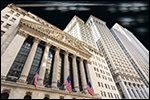
By Pam Martens and Russ Martens: June 12, 2020 ~ Every major Wall Street bank tanked yesterday. Citigroup fared the worst, losing 13.37 percent of its market value versus a broader market decline of 5.89 percent on the S&P 500 Index. Bank of America didn’t look like much of a source of strength either, losing 10.04 percent on the day. The largest bank in the country, JPMorgan Chase, whose CEO, Jamie Dimon, perpetually brags about its “fortress balance sheet,” lost 8.34 percent. For a close look at what’s hiding in the tall weeds behind that fortress, see here. Just the afternoon before this bank carnage, this is what the Chairman of the Federal Reserve, Jerome Powell, had to say in his press conference about the U.S. banking system (which, of course, the Fed has been in charge of supervising in order to prevent another catastrophic blowup as occurred in 2008): … Continue reading
The Fed Just Pulled Off Another Backdoor Bailout of Wall Street

By Pam Martens and Russ Martens: June 10, 2020 ~ The Federal Reserve has authorized 11 financial bailout programs thus far. Despite Fed Chairman Jerome Powell’s reassurances at his press conferences that these programs are to help American families, a full 10 of these programs are actually bailouts of Wall Street banks or their trading units. The latest Wall Street bank bailout to come out of hiding is the Fed’s Secondary Market Corporate Credit Facility (SMCCF). This program was supposed to buy up corporate bonds in the secondary market in order to help corporate bond markets regain liquidity. Thus far, the only thing the SMCCF has bought up are Exchange Traded Funds (ETFs) holding investment grade and junk-rated bonds. The SMCCF program began operations on May 12. By May 18 the Fed had spent $1.58 billion buying up ETFs. The ultimate goal of the facility, at this point, is to … Continue reading
Wall Street Banks Paid $11.7 Billion in Dividends to Investors this Year while Taxpayers Must Absorb $454 Billion of Bank Losses

By Pam Martens and Russ Martens: May 15, 2020 ~ Following the Wall Street banking collapse in 2008, the then head of the Federal Deposit Insurance Corporation (FDIC) Sheila Bair wrote the book Bull by the Horns. She described how the Federal Reserve and the Office of the Comptroller of the Currency (OCC) had ignored the systemic problems at Citigroup and allowed this “sick bank” to continue paying out cash dividends. Bair wrote as follows: “By November [of 2008], the supposedly solvent Citi was back on the ropes, in need of another government handout. The market didn’t buy the OCC’s and NY Fed’s strategy of making it look as though Citi was as healthy as the other commercial banks. Citi had not had a profitable quarter since the second quarter of 2007. Its losses were not attributable to uncontrollable ‘market conditions’; they were attributable to weak management, high levels of … Continue reading
Evidence Suggests U.S. Financial Crisis Started on August 14, 2019
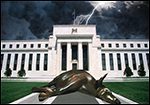
By Pam Martens and Russ Martens: May 14, 2020 ~ In the Federal Reserve’s most recent “Supervision and Regulation Report” on the big bank holding companies it “supervises,” the Fed continued its attempts to perpetuate the narrative that “The banking industry came into 2020 in a healthy financial position” and has simply unraveled as a result of the COVID-19 pandemic. That narrative is built on the same flimsy house of cards that the New York Times and Andrew Ross-Sorkin built the narrative that the mega banks on Wall Street were not responsible for the 2008 financial collapse. The Fed is desperate to promote this narrative to stop a new Congress next year from holding hearings on why the Fed, for the second time in 12 years, had to engage in trillions of dollars in Wall Street bank bailouts after reassuring Congress for years that the financial system was fine as … Continue reading
Fed Report Shows Magical Thinking on Safety of Wall Street’s Banks

By Pam Martens and Russ Martens: May 11, 2020 ~ The chart above from the November 2019 Federal Reserve report on the condition of the biggest banks in the U.S. shows that almost half were rated unsatisfactory. There have not been any reports since that November report until the latest one from the Fed which was released last week and dated May 2020. The new report carries this headline: “The banking industry came into 2020 in a healthy financial position.” This is part of the Fed’s strategy to lay its abysmal failure to supervise the mega Wall Street banks at the door of the coronavirus pandemic. It’s very easy today to get a totally bogus headline, one that is built completely on magical thinking, flashed across a TV screen in America. As the photo below illustrates, last Friday Steve Liesman of CNBC repeated this magical thinking from the Fed accompanied … Continue reading
A Strange Timeline at JPMorgan Chase Includes a Meeting with Fed Chair Jay Powell
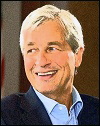
“This begs the question: did the U.S. have a Wall Street banking crisis similar to 2008 long before there was a pandemic crisis?” By Pam Martens and Russ Martens: April 15, 2020 ~ From 3 to 4 p.m. on Wednesday, February 19 of this year, Federal Reserve Chairman Jerome (Jay) Powell met in the anteroom to his office in Washington, D.C. with Jamie Dimon, Chairman and CEO of JPMorgan Chase. Adding to the unusual nature of this meeting, the Chief Financial Officer of JPMorgan Chase, Jennifer Piepszak, had traveled with Dimon from New York to Washington, D.C. to attend this meeting. During the entire month of February, Powell met with no other CEO or CFO of any other Wall Street mega bank. We obtained this information from a review of the Fed Chairman’s daily calendar. The meeting came one day after Reuters reported a “sweeping reshuffle” at JPMorgan’s investment bank … Continue reading
The New York Fed, Owned by Multinational Banks, Is Nationalizing Capital Markets

By Pam Martens and Russ Martens: April 9, 2020 ~ For the first time in the history of the Federal Reserve, it has signed on to a plan with Congress to nationalize the unmanageable debts of global banks and other multinational corporations and put the U.S. taxpayer on the hook for the losses. Conducting the bulk of these programs will be the Federal Reserve Bank of New York, known as the New York Fed, which is a private institution owned by (wait for it) multinational banks. Because the New York Fed is owned by multinational banks and is allowed to create trillions of dollars out of thin air to conduct bailouts of global banks and multinational corporations since it created this precedent in 2008, it is effectively functioning as a multinational central bank with the Federal Reserve in Washington, D.C. and Fed Chairman Jerome Powell little more than titular props … Continue reading
The Mood of Traders Darkens on Wall Street

By Pam Martens and Russ Martens: April 7, 2020 ~ It’s become your life or your trading bonus at some Wall Street firms. On November 10 of last year, Lesley Stahl of the CBS investigative news program, 60 Minutes, interviewed Jamie Dimon, the Chairman and CEO of JPMorgan Chase. As part of the interview, Dimon strolled Stahl around one of his trading floors in New York where traders appeared tightly packed in close quarters. Dimon said this: “This is one of six trading floors in the building. There’s like 450 people in this trading floor. An equivalent to this in London, half of this in Hong Kong, and in 23 other countries around the world.” When we went back to re-watch the program to more carefully consider the dystopian work environment of human beings in the 21st century, we took a screen shot of a female trader at JPMorgan Chase. In … Continue reading
JPMorgan Chase Has $2.9 Trillion Exposure in Off-Balance Sheet Items Vs $2.3 Trillion on Its Balance Sheet
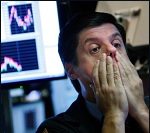
By Pam Martens and Russ Martens: April 5, 2020 ~ According to the Uniform Bank Performance Report for December 31, 2019 at the Federal Financial Institutions Examination Council (FFIEC), JPMorgan Chase, whose Chairman and CEO, Jamie Dimon, has perpetually bragged about its “fortress balance sheet,” has $2.3 trillion in exposure on its balance sheet and $2.9 trillion in off-balance sheet exposure. The off-balance sheet exposure includes things like credit card lines of credit that have been issued but not tapped as of December 31, 2019; corporate standby letters of credits that have been issued but not yet tapped; securitized assets that have been sold with recourse back to JPMorgan Chase’s balance sheet; real estate loans committed but not yet funded; and a staggering $1.2 trillion in credit derivatives – the same instruments that brought on an FBI probe and congressional investigations of the bank in 2012 and cost the bank … Continue reading
Wall Street Had Cut 68,000 Jobs and Received Trillions in Emergency Loans Prior to COVID-19 Anywhere in the World
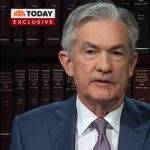
By Pam Martens and Russ Martens: April 1, 2020 ~ On March 26 Federal Reserve Chairman Jerome Powell went on the Today show to deliver one message: “There is nothing fundamentally wrong with our economy.” Recently U.S. Treasury Secretary Steve Mnuchin has appeared on the White House lawn to tell reporters that this is nothing like the last financial crisis. Fed regional bank presidents have appeared on cable news asserting that the Wall Street banks have plenty of capital and today’s economic distress is caused solely by the coronavirus. Even New York Times columnist and perpetual Wall Street cheerleader, Paul Krugman, was on CNBC this week reassuring viewers that today’s problem was not like the last financial crisis. And yet – the facts keep getting in the way of this “official” narrative. The first coronavirus COVID-19 case was discovered in China in December 2019 and didn’t become a major issue … Continue reading

